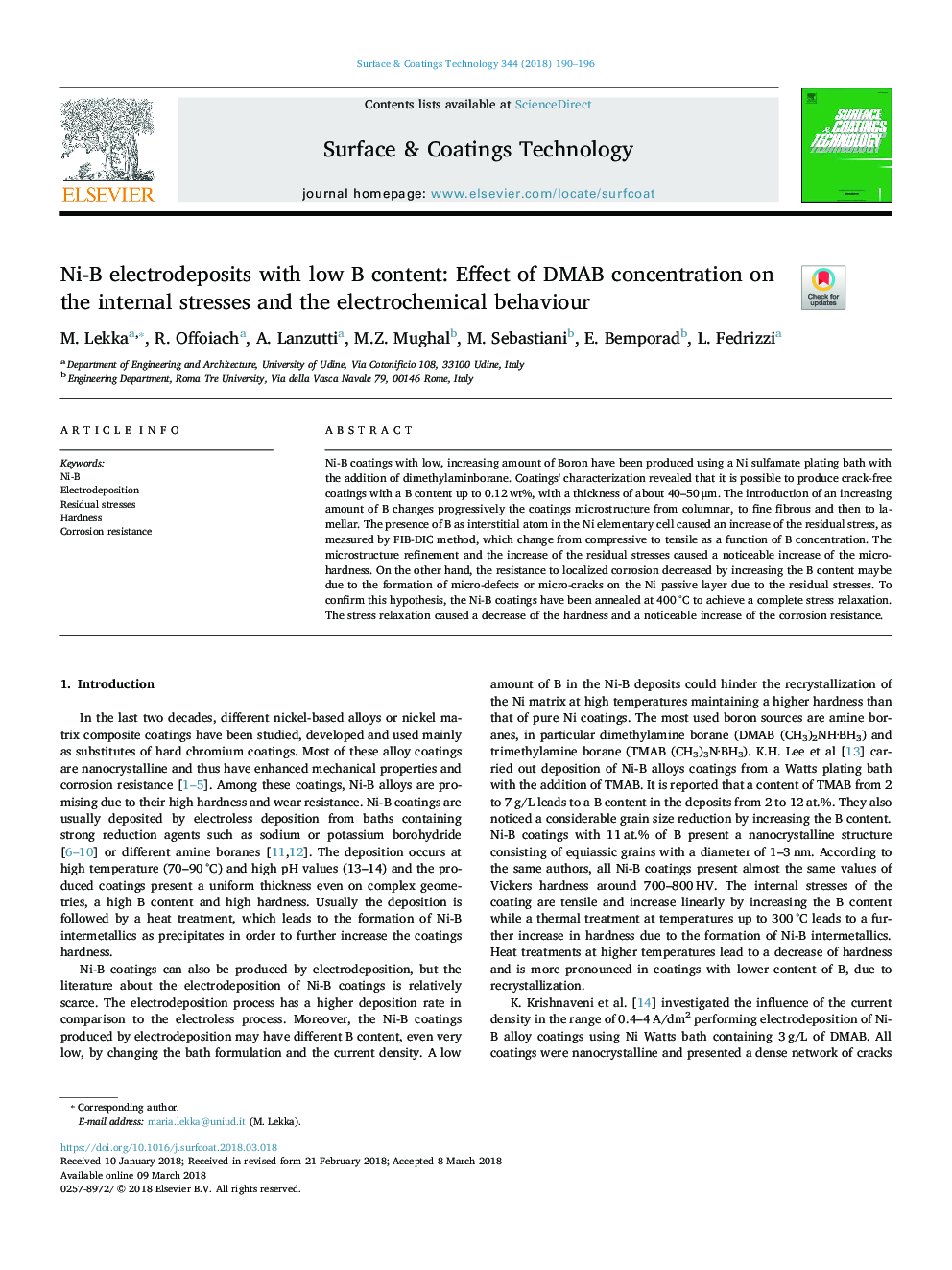| Article ID | Journal | Published Year | Pages | File Type |
|---|---|---|---|---|
| 8023754 | Surface and Coatings Technology | 2018 | 7 Pages |
Abstract
Ni-B coatings with low, increasing amount of Boron have been produced using a Ni sulfamate plating bath with the addition of dimethylaminborane. Coatings' characterization revealed that it is possible to produce crack-free coatings with a B content up to 0.12â¯wt%, with a thickness of about 40-50â¯Î¼m. The introduction of an increasing amount of B changes progressively the coatings microstructure from columnar, to fine fibrous and then to lamellar. The presence of B as interstitial atom in the Ni elementary cell caused an increase of the residual stress, as measured by FIB-DIC method, which change from compressive to tensile as a function of B concentration. The microstructure refinement and the increase of the residual stresses caused a noticeable increase of the microhardness. On the other hand, the resistance to localized corrosion decreased by increasing the B content maybe due to the formation of micro-defects or micro-cracks on the Ni passive layer due to the residual stresses. To confirm this hypothesis, the Ni-B coatings have been annealed at 400â¯Â°C to achieve a complete stress relaxation. The stress relaxation caused a decrease of the hardness and a noticeable increase of the corrosion resistance.
Related Topics
Physical Sciences and Engineering
Materials Science
Nanotechnology
Authors
M. Lekka, R. Offoiach, A. Lanzutti, M.Z. Mughal, M. Sebastiani, E. Bemporad, L. Fedrizzi,
